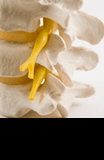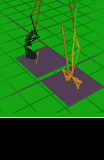The recording is made by placing small metal discs, called electrodes, on the patient's scalp. The electrodes pick up the electrical signals produced by their brain.
The patterns of brain electrical activity recorded can provide useful information to the doctor on several conditions.
Types of EEG
If you would like to refer a patient for any of these tests, please contact us.
Routine and Sleep Deprived EEG
Routine EEG
This is a short EEG recording of your brain activity lasting 20-40 minutes. During the test, the Clinical Physiologist will ask you to open and close your eyes and breathe in and out deeply (hyperventilate) for a few minutes. They will show you a flashing light. These procedures are done to see how they may affect your brain activity.
The Physiologist will explain each of these procedures and ask for your consent on the day of your appointment.
Sleep Deprived EEG
A Sleep Deprived EEG aims to record a period of sleep. We will ask you to follow sleep deprivation instructions.
We may prescribe melatonin for children to help them achieve this.
Children, their parents and carers may find this BBC video useful:
Get Well Soon | Dr Ranj does a test called an EEG - BBC iPlayer
Ambulatory EEG
This is a long EEG recording of brain activity (usually 48 hours).
The electrodes are fixed in place, and we give you a small portable recorder to carry around with you.
Home Video Telemetry EEG
This is a long EEG recording of brain activity (usually 48 hours, but can be longer) including the recording of video images.
The electrodes are fixed in place, and we give you a small portable recorder and a video camera to take home with you.
Inpatient Video-Telemetry EEG
This is a prolonged EEG recording of brain activity (usually five days) with simultaneous video recording done while patients stay on the Neurosciences Ward at the John Radcliffe Hospital or Robin's Ward at Oxford Children's Hospital.
Intracranial EEG
This is done to check if surgery is possible for some people with complex epilepsy. It involves surgical placement of electrodes on the brain to find out where on the brain seizures are originating.
For more information please visit:




























































